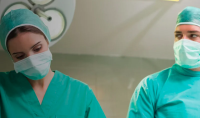Anaesthesia | Trauma | Circulatory shock in trauma



Circulatory Shock in Trauma
Session Overview
Description
This session describes the clinical features and physiological responses to traumatic haemorrhagic shock. It also summarises the current understanding of the underlying pathophysiology and approaches to the management of these critically unwell patients.
Learning Objectives
By the end of this session you will be able to:
- Describe the signs and symptoms of haemorrhagic shock
- List the physiological responses and pathophysiological processes associated with acute haemorrhage in the trauma setting
- Explain the principles of damage-control resuscitation and identify resuscitation end points
- Explain the concept of damage-control surgery and appreciate the importance of achieving timely definitive haemostasis
Prerequisites
Before commencing this session you should complete:
- The Primary Survey (001-0356)
Haemorrhage remains the leading cause of potentially preventable trauma deaths, with an estimated 1.5 million deaths per year worldwide. Haemorrhage results in inadequate oxygen delivery at the cellular level leading to haemorrhagic shock. If bleeding continues, death rapidly follows with a median time of 2-3 hours from initial presentation [1](read details regarding the reference).
Those patients who survive the initial haemorrhage remain at high risk of poor functional outcomes and increased long-term mortality. Historically, advances in the management of haemorrhagic shock have been made during times of conflict. This stands true for the recent engagements in Iraq and Afghanistan with the advent of Damage Control Resuscitation (DCR). This represents a paradigm shift in the management of traumatic haemorrhagic shock.
This session summarises the current understanding of the underlying pathophysiology of haemorrhagic shock, and outlines the treatment strategy of these critically-ill patients.
- Anaesthesia | Physiology | Mechanics of Ventilatio...
- Posted By eIntegrity Healthcare e-Learning
- Posted Date: 2025-02-21
- Location:Online
- This session continues to look at respiratory mechanics, including lung compliance, the role of surfactant and the factors that determine whether airflow is laminar or turbulent. Respiratory function tests are also explained
- Anaesthesia | Physiology | Ventilation/Perfusion A...
- Posted By eIntegrity Healthcare e-Learning
- Posted Date: 2025-02-21
- Location:Online
- This session describes how and why ventilation and perfusion vary in the healthy lung. Causes of hypoxia, such as hypoventilation, increased dead space and shunt, are discussed to help the trainee explain and manage hypoxia clinically.
- Anaesthesia | Physiology | Pulmonary Ventilation: ...
- Posted By eIntegrity Healthcare e-Learning
- Posted Date: 2025-02-21
- Location:Online
- This session covers the measurement and clinical importance of lung volumes, including functional residual capacity and dead space. Information regarding the performance and interpretation of flow-volume loops is also included.
- Anaesthesia | Physiology | Co2 Carriage in Blood a...
- Posted By eIntegrity Healthcare e-Learning
- Posted Date: 2025-02-21
- Location:Online
- This session covers the physiology of how carbon dioxide is carried by blood, including its conversion into bicarbonate ions and the role of the red blood cell and haemoglobin in this process. The session also describes how buffers work, and the fundament
- Anaesthesia | Physiology | Function of Haemoglobin...
- Posted By eIntegrity Healthcare e-Learning
- Posted Date: 2025-02-21
- Location:Online
- This session focusses on the function of haemoglobin in oxygen (O2) carriage from the lungs to other tissues where cells are supplied with the O2 required for oxidative phosphorylation in the mitochondria. We will cover the structure




